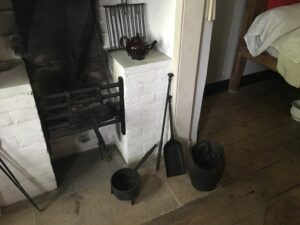The above image features the typical teapot or kettle found in British workhouses in the latter half of the eighteenth century. Although the one depicted is ‘bronze-glazed’ earthenware (pottery made from hardened clay), there are accounts of copper-glazed and ‘Old Fashioned’ earthenware teapots. In addition, it is likely that tin-glazed teapots were commonly found.These teapots were placed all through the workhouse in common spaces, more private bedded wards, and even authority chambers.
In the museum context, it would be most intuitive for visitors to first engage with the teapot as part of a larger–perhaps interactive–display of tableware in kitchen and pantry settings. The display would ideally convey some background information on the commodification of tin-glazed and earthenware items, as well as provide an interactive experience on the cooking of food in the workhouse. Maybe a digitization/projection of a cook at work would be appropriate here; the hologram cook could beckon visitors to take a look at the bowls on display, in which images of onion gruel/other foods could be projected on cue, and then it could encourage visitors to pour out tea or water from the kettle.
To emphasize the ubiquity of the teapot outside the context of meal preparation, multiple replicas could also be placed throughout the museum in different areas. They could be contextualized with plaques varying on this theme: Thirsty? You might be able to find a water fountain right around the corner, but with three strictly regimented meals a day, a pauper might have found oneself craving water outside of mealtime. They could have drank from these common kettles.
